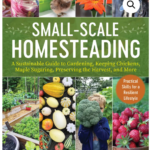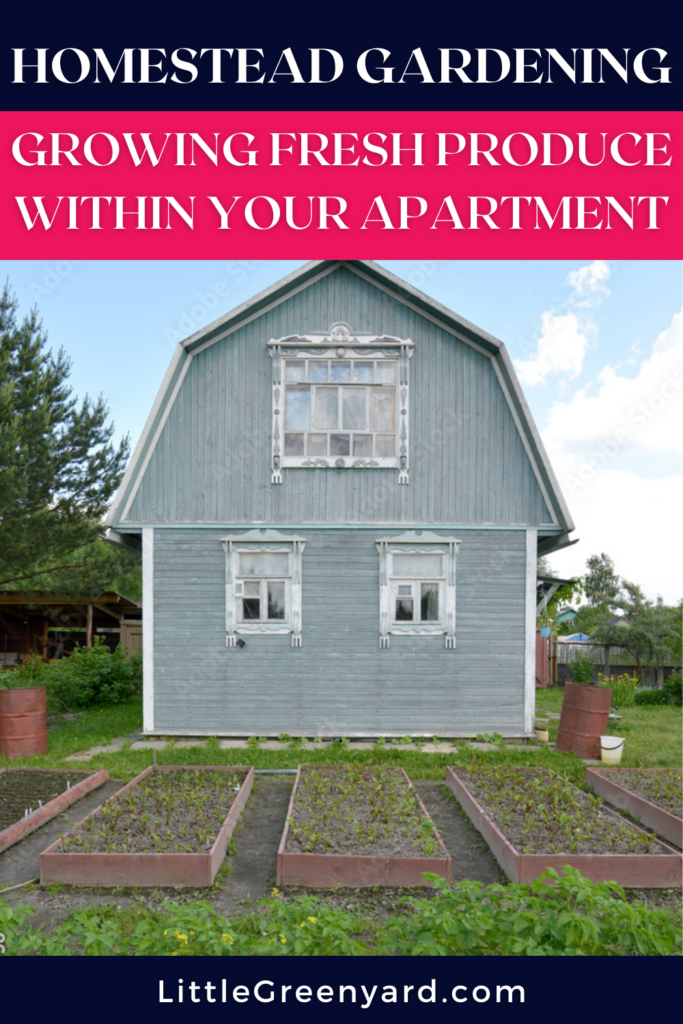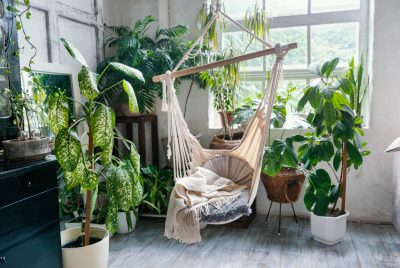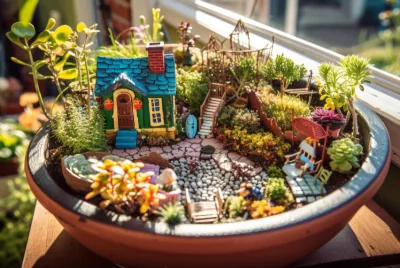Homestead Gardening: Growing Fresh Produce Within Your Apartment
As an enthusiastic advocate for homestead gardening, I believe that everyone can experience the joy of growing their own fresh produce, even within the confines of an apartment. In this article, I will share helpful suggestions on how to start a homestead garden within an apartment and provide compelling reasons for embracing this fulfilling endeavor.
What is Homestead Gardening?
Homestead gardening refers to the practice of cultivating a variety of plants, including herbs, vegetables, fruits, and flowers, in a small-scale, self-sufficient manner. It embodies the principles of self-reliance and sustainability, allowing individuals to take control of their food production and reduce their reliance on store-bought produce.
Why People Start Homestead Gardening as a Hobby
There are several compelling reasons why people embark on homestead gardening as a hobby:
- Fresh and Organic Produce: One of the primary motivations is the desire for fresh and organic produce. By growing your own food, you have complete control over the cultivation methods, ensuring that no harmful pesticides or chemicals are used. The result is delicious, nutritious produce that you can enjoy straight from your garden to your table.
- Cost Savings: Another significant factor is the potential for cost savings. With the rising prices of organic produce, cultivating your own food can help reduce your grocery bills significantly. By investing time and effort into your garden, you can reap the financial benefits of not having to purchase certain vegetables, herbs, or fruits regularly.
- Connection with Nature: Homestead gardening allows individuals to establish a deeper connection with nature. It provides an opportunity to step away from the fast-paced urban lifestyle and reconnect with the earth. Spending time tending to plants, observing their growth, and witnessing the fruits of your labor can be incredibly fulfilling and therapeutic.
- Health and Well-being: Engaging in gardening activities has been shown to have numerous physical and mental health benefits. It promotes physical activity, reduces stress levels, and enhances overall well-being. Homestead gardening provides an avenue for relaxation, mindfulness, and a sense of achievement.
- Environmental Consciousness: Many individuals are motivated by environmental concerns when starting homestead gardening. By growing your own food, you can reduce your carbon footprint by minimizing the transportation, packaging, and energy consumption associated with store-bought produce. It is a tangible way to contribute to a more sustainable future.
Want to Find Out More About Small-Scale Homesteading?
Check out this book from Stephanie and Michelle which shares sustainable gardening and real practical skills for a resilient lifestyle!
The book covers how to garden, preserve food, tend backyard chickens, cook from scratch, and care for your families with natural homemade alternatives. Merging insight from two homesteaders proves to be twice the fun and reminds us that working together is always better!

Benefits of Homestead Gardening
Homestead gardening offers numerous benefits that make it a rewarding and worthwhile pursuit. First and foremost, it provides access to fresh and organic produce right at your fingertips. By growing your own herbs, vegetables, and even compact fruit varieties, you can savor the unmatched flavor and nutritional value of homegrown food. You can start small by having a salad garden that you can harvest everyday for lunch, before getting on to bigger projects.
Additionally, homestead gardening can lead to significant cost savings. With the rising prices of organic produce, cultivating your own food can reduce your grocery bills and provide long-term financial benefits. Moreover, it allows you to establish a deeper connection with nature and gain a sense of fulfillment from nurturing and witnessing the growth of your plants.
Assessing Space in an Apartment
Before embarking on your apartment gardening journey, it’s essential to assess the available space and understand its potential for gardening. Take a look around your apartment and identify areas that receive adequate sunlight and airflow. Ideally, choose a spot near windows or balconies where plants can thrive. If natural light is limited, don’t worry—there are solutions for that too!
Container gardening is a fantastic option for apartment dwellers. It allows you to grow plants in pots, hanging baskets, or window boxes. Assess the space you have and determine the number and size of containers that can comfortably fit within your apartment.
Choosing Suitable Plants for Apartment Gardening
When it comes to selecting plants for your apartment garden, prioritize those that thrive indoors and require minimal space. Herbs like basil, rosemary, and mint are excellent choices as they can be grown on windowsills and add delightful flavors to your culinary endeavors. Leafy greens such as lettuce, spinach, and kale also do well in containers.
If you have enough space and sunlight, consider growing compact fruit varieties such as strawberries or cherry tomatoes. Additionally, don’t overlook the beauty and edibility of certain flowers like nasturtiums or pansies, which can add color to your apartment and be incorporated into salads or desserts.
Setting Up Your Apartment Garden
Once you’ve chosen your plants, it’s time to set up your apartment garden. Select containers that provide adequate drainage and are the right size for your plants to flourish. Use high-quality potting soil and consider adding organic fertilizers or compost to nourish your plants.
Ensure your plants receive the right amount of water. While it’s important not to overwater, be mindful not to let the soil dry out completely. Find a watering routine that works for your plants and the specific conditions in your apartment.
Maximizing Limited Space
In an apartment, space is often a precious commodity. However, with creative techniques, you can maximize the limited area available for your garden. Embrace vertical gardening by utilizing trellises, stakes, or wall-mounted planters. This allows you to grow climbing plants like beans or cucumbers while utilizing upward space.
Hanging baskets are another space-saving option. Hang them from ceilings or balcony railings and grow trailing plants such as cherry tomatoes or strawberries. Don’t forget about windowsills—they can serve as perfect spots for smaller containers or herb gardens, bringing greenery into your apartment.
Ensuring Adequate Light and Airflow
Proper lighting and airflow are crucial for the success of your apartment garden. Place your plants near windows or balconies where they can receive sufficient natural light. If sunlight is scarce, consider using grow lights, which provide artificial light that mimics the sun’s spectrum. Position the lights at an appropriate distance from the plants to avoid burning or stunting their growth.
Good airflow is essential to prevent the buildup of moisture and the occurrence of diseases. Open windows when possible, or use fans to ensure proper ventilation. This will promote healthy plant growth and minimize the risk of fungal or bacterial issues.
Maintaining Your Apartment Garden
Regular maintenance is key to keeping your apartment garden thriving. Water your plants according to their specific needs, taking into account factors such as humidity and temperature. Monitor the soil moisture and adjust your watering routine accordingly.
Pruning and trimming are essential for maintaining the health and shape of your plants. Remove dead or yellowing leaves, and trim back excessive growth to prevent overcrowding. Regularly inspect your plants for signs of pests or diseases, and take appropriate measures to control and prevent them.
Overcoming Challenges in Apartment Gardening
Apartment gardening, like any form of gardening, comes with its challenges. Limited space can be overcome by implementing vertical gardening techniques and utilizing various types of containers. Pests and diseases may pose a threat, but with proper care and timely interventions, you can mitigate their impact. Finding a balance between tending to your plants and managing other responsibilities is crucial, but remember that even a small garden can bring immense joy and rewards.
Harvesting and Enjoying Your Homegrown Produce
One of the most rewarding aspects of homestead gardening is reaping the fruits of your labor. You can be sure that your own produces are free from harmful chemicals. You can become more mindful of what you are eating and better appreciate food since you put in the effort to grow and nurture your garden.
Learn about the ideal harvest times for your plants and pick them when they are ripe. Discover the culinary delights that can be created with your homegrown herbs and vegetables, and relish the flavors and freshness they bring to your meals.
If you find yourself with a surplus of produce, consider sharing it with your neighbors, friends, or local community. This fosters a sense of connection and creates opportunities for others to experience the joy of homegrown food.
Nourish Your Body and Boost Your Health
In recent years, plant-based diets have gained significant popularity. More and more people are choosing to embrace a plant-based lifestyle for various reasons, including improved health, environmental sustainability, and animal welfare. One of the key benefits of a plant-based diet is improved health. Numerous studies have shown that plant-based diets can help reduce the risk of chronic diseases such as heart disease, diabetes, and certain types of cancer. Plant-based diets are typically lower in saturated fat and cholesterol and higher in fiber, vitamins, minerals, and antioxidants. These nutrients are essential for maintaining optimal health and can help prevent various health conditions.
Another benefit of a plant-based diet is its positive impact on the environment. Animal agriculture is a significant contributor to greenhouse gas emissions, deforestation, and water pollution. By reducing or eliminating the consumption of animal products, individuals can significantly reduce their carbon footprint and help preserve natural resources. Additionally, plant-based diets require less land, water, and energy compared to animal-based diets.
Finding Community and Resources
Engaging with fellow gardening enthusiasts can provide valuable insights and support. Join local gardening groups or online communities where you can exchange knowledge, seek advice, and share your experiences. Attend workshops or classes to enhance your gardening skills, and don’t hesitate to seek guidance from experienced gardeners who can offer personalized advice.
Conclusion
Embarking on a homestead gardening journey within your apartment opens up a world of possibilities. By utilizing the available space, choosing suitable plants, and providing the necessary care, you can create a thriving garden that brings joy, fresh produce, and a stronger connection to nature. Embrace the challenges, adapt to your surroundings, and enjoy the rewarding experience of nurturing your own homegrown oasis.
FAQs
- Can I grow all types of plants in an apartment? While some plants may be better suited for outdoor gardens, there are plenty of options for apartment gardening. Herbs, leafy greens, compact fruits, and certain flowers can thrive indoors with proper care.
- How often should I water my apartment garden? The watering frequency depends on factors such as plant type, container size, and environmental conditions. Check the moisture level of the soil regularly and water when it becomes dry, ensuring not to overwater or let the soil dry out completely.
- Do I need special equipment for indoor gardening? Basic gardening tools like pots, potting soil, and watering cans are essential. Additionally, you may consider using grow lights, trellises, or hanging baskets to optimize plant growth in limited spaces.
- What are the common pests and diseases in indoor gardens? Common indoor garden pests include aphids, spider mites, and fungus gnats. Diseases such as powdery mildew or damping-off can also occur. Regular monitoring, proper ventilation, and organic pest control methods can help prevent and manage these issues.
- How can I involve children in apartment gardening? Apartment gardening can be a wonderful activity for children. Allow them to choose plants they are interested in, assign them age-appropriate tasks like watering or harvesting, and teach them about the importance of nature and where food comes from. It’s a great opportunity for hands-on learning and quality time together.





